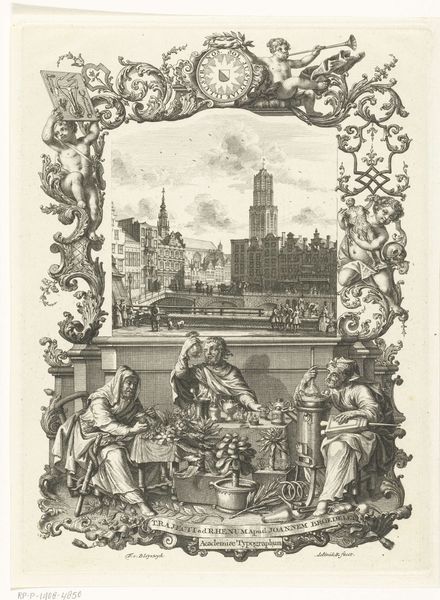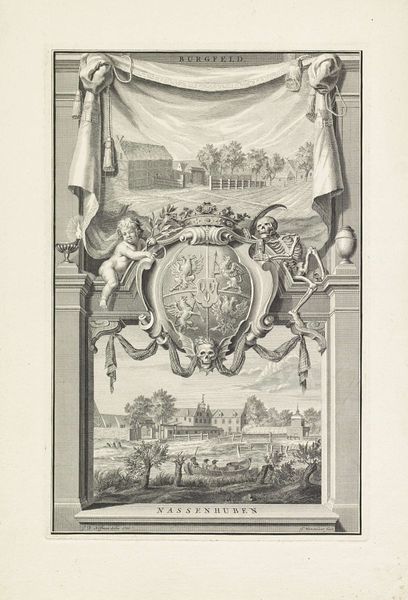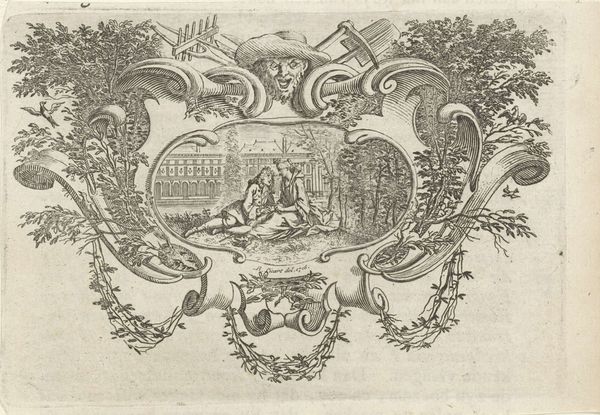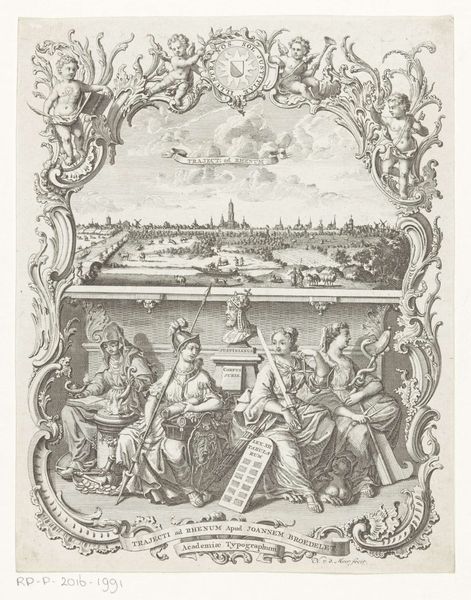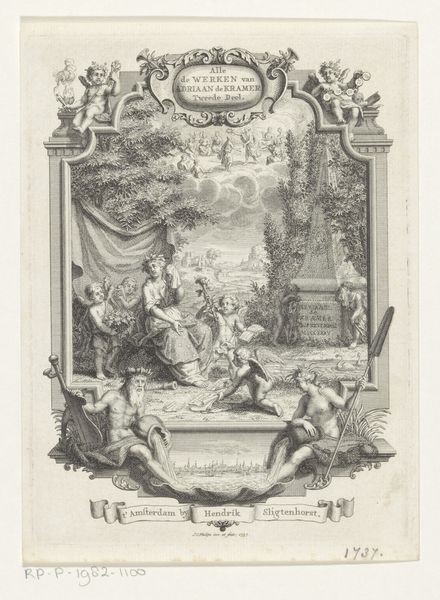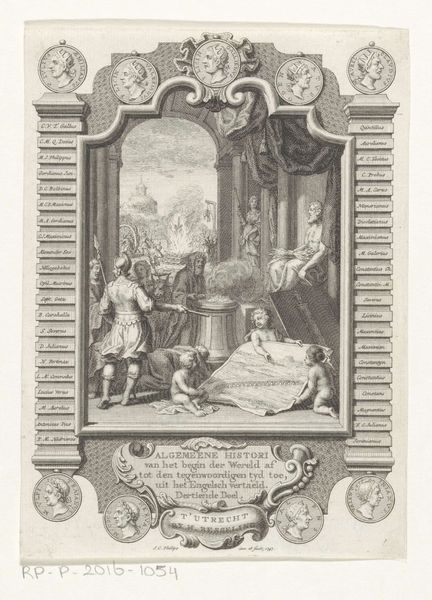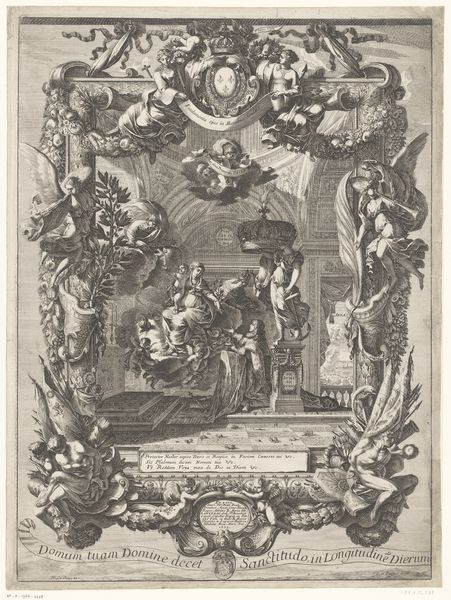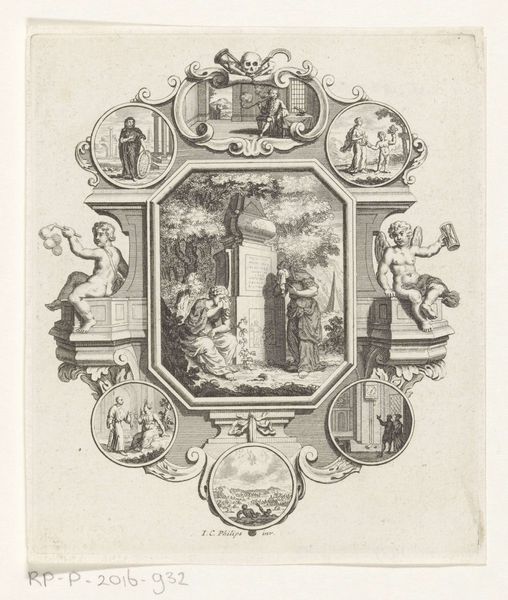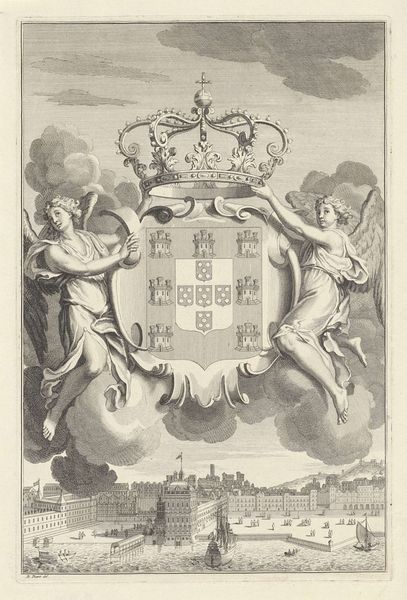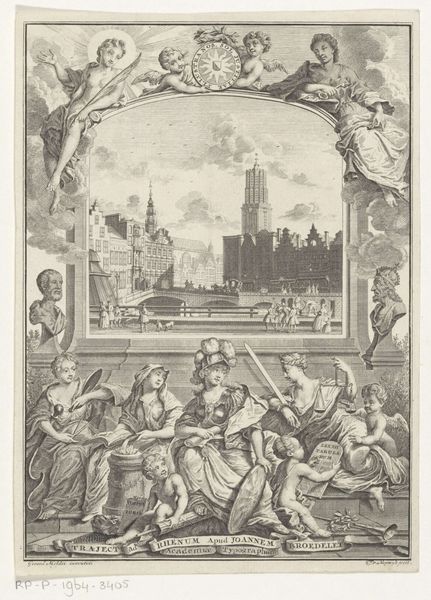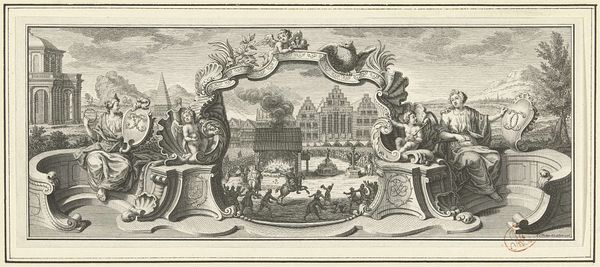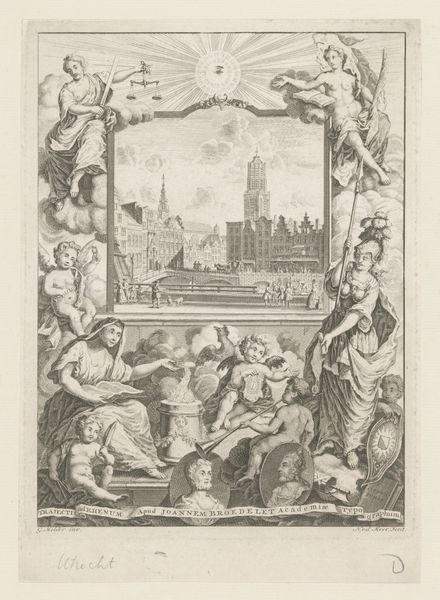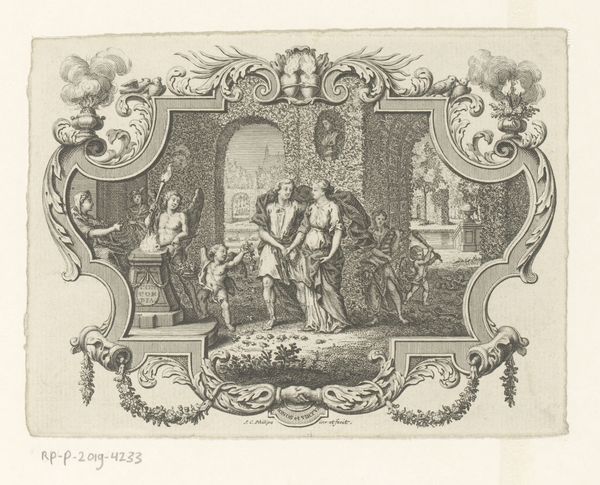
Stadsgezicht met Domkerk te Utrecht en allegorie met drie geleerden 1750 - 1790
0:00
0:00
Dimensions: height 232 mm, width 173 mm
Copyright: Rijks Museum: Open Domain
Editor: This engraving, "Stadsgezicht met Domkerk te Utrecht en allegorie met drie geleerden" by François van Bleyswijck, dates from between 1750 and 1790. It’s teeming with detail, and the combination of the cityscape and the allegorical figures at the bottom feels unusual. What jumps out to you in terms of composition? Curator: The work is immediately striking due to its bifurcated structure. There's a clear division between the topographical accuracy of the Utrecht cityscape and the allegorical representation of scholarship below. Note the elaborate frame. How does it unify these disparate elements through the use of symmetry and the visual echo of curves and flourishes? Editor: I see that, especially with the cherubic figures on either side! So, beyond the symmetry, how does the artist use visual cues to guide our eye? Curator: Consider the lines created by the architecture in the cityscape, specifically how the tower pulls the eye upward, then downwards along the frame to the figures at work. The density of detail around the allegorical figures contrasts with the open sky of the cityscape, creating a balance. What visual relationships can you identify between the three scholars themselves? Editor: They all seem intensely focused on their work, clustered closely together, creating a sense of intellectual activity. The way the light falls across their faces highlights their concentration. Curator: Precisely. The engraver masterfully employs light and shadow to direct the viewer's attention, thereby enhancing the conceptual weight of learning and study. It’s a dynamic interplay of space and form intended to provoke intellectual engagement. Are there other ways Bleyswijck may be doing this? Editor: Looking at the objects surrounding the scholars—the scientific instruments, the plants—they all seem meticulously rendered, further emphasizing the pursuit of knowledge. The allegorical composition is incredibly self-contained. I had never noticed the symmetry here. Curator: Indeed, the artist presents us with not just a view but a carefully constructed argument about knowledge and civic pride, articulated through form and visual rhetoric. I see the piece differently now as well.
Comments
No comments
Be the first to comment and join the conversation on the ultimate creative platform.
